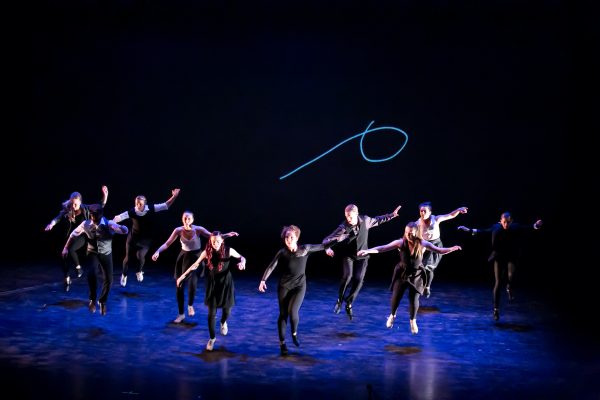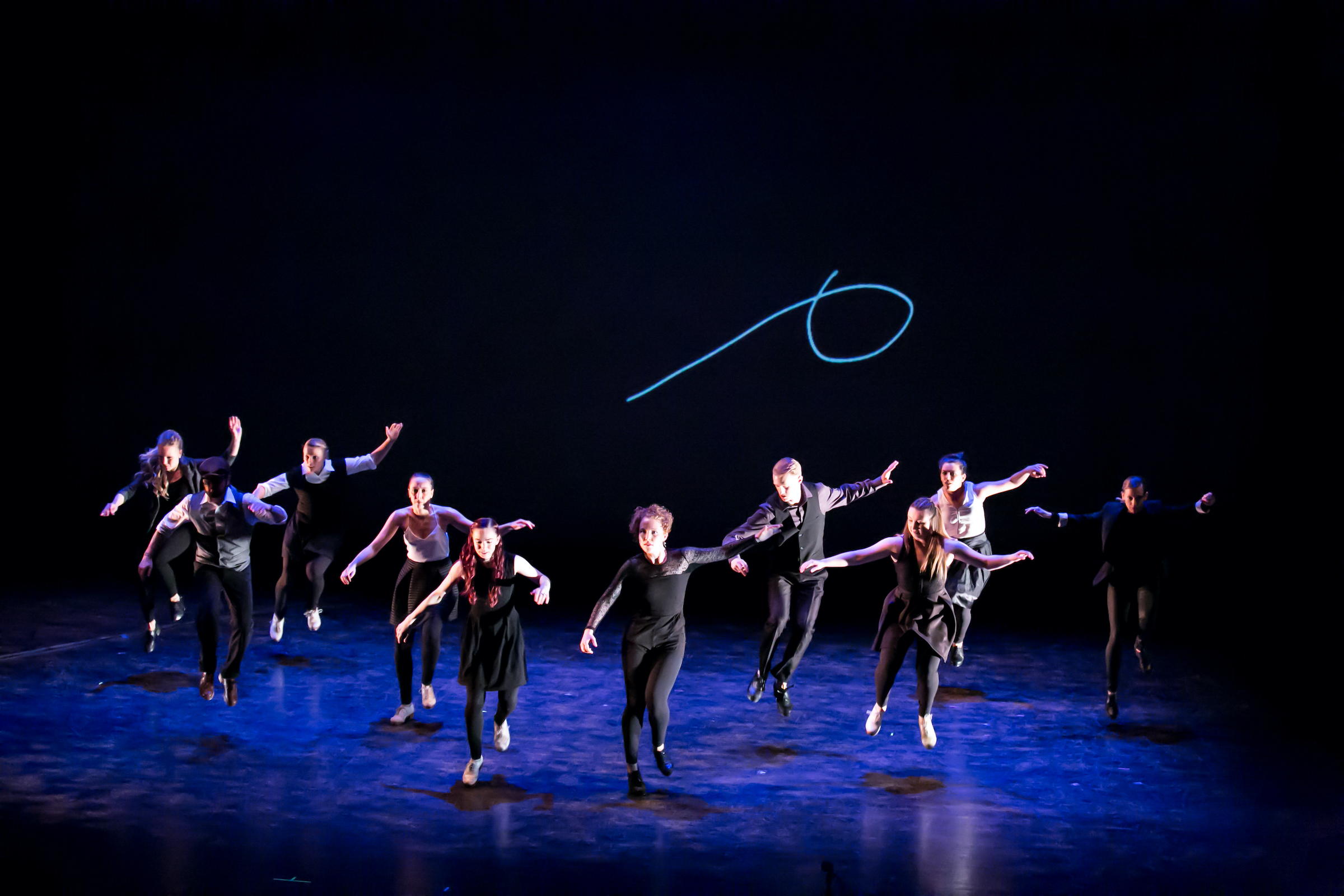“There is a vitality, a life force, an energy, a quickening that is translated through you into action, and because there is only one of you in all of time, this expression is unique. And if you block it, it will never exist through any other medium and it will be lost. The world will not have it. It is not your business to determine how good it is nor how valuable nor how it compares with other expressions. It is your business to keep it yours clearly and directly, to keep the channel open.”
Martha Graham to Agnes De Mille, as written down by De Mille in her book, Martha: The Life and Work of Martha Graham, pg. 264.
I grew up in a traditional studio, one that taught tap, jazz, and ballet. To say I studied modern dance would be a stretch: I took a few classes. And yet, I came across this inspirational quote by Martha Graham, one of the biggest names in modern dance, in my latest interview, with Dianne Montgomery, a tap dancer, choreographer, and composer.

I had a set of questions ready for our interview: she’s premiering a new work at Toronto’s 2022 Fall for Dance North: Softly Losing, Softly Gaining. She’s also performed on stages around the world, including Saturday Night Live, The Late Show with David Letterman, and Late Night with Conan O’Brien.
Tap was my favourite of the three forms of dance I studied. I couldn’t wait to talk with Dianne about it. But we dove straight into creating.
Now that I make my professional artistic living as a writer and she as a choreographer and dancer, our discussion was fascinating. I wanted to share some important points on the creative process for artists with you in the hopes of inspiring you to become an artist—professional or amateur. I’ve edited our answers for brevity and clarity.
Artistic Background: Did You Start as a Child?
All children find it easy to create. In my opinion, we unlearn that creativity as we get older. You’ll find several blog posts on that opinion on my website. How did our childhoods affect our adult creative selves?
Dianne: I didn’t come from dance studios, actually. I didn’t study dance as kid. I walked into a recreational adult class when I was in my 20s . I liked to dance [for fun] as a kid. But once I was [in the adult class], I was obsessed, obsessed, obsessed, obsessed. So I was definitely a late bloom. A very late bloom. I’ve been dancing about a decade now.
Lori: I enjoyed writing a lot as a kid. But I find the difference between me as a writer now versus me in my teen years—and it was the same when I danced—was that as a teenager, inspiration was a high. But then once that high dissipated, that was it. I was like, “Okay, done. I’ll go watch TV.” Whereas as an adult, I’ve learned that inspiration is the door to the actual idea.
Consistency as Part of the Creative Process
A common myth about the creative process for artists is that we wait for inspiration to strike. Both Dianne and I put that myth to bed.
Dianne: I hear sometimes from people not in the dance world, “Hope you’re having fun. It must be a blast!” Work is absolutely putting your bum in the seat when you don’t want to. When you feel defeated. Or returning to something that you feel has failed or you feel is not up to the mark. And scrapping, revising, returning, doing it when you’re tired. Doing it when you’re not tired. So even though there’s a passion for sure, that is definitely a motor that drives my relationship to wanting to show up every day.
Lori: When I get inspired, I have this high, then I think, Oh, crap. Because I know I have to go through the work of getting rid of the real crap—usually the inspiring idea—to get to the real idea. That’s just how I work. The high is an amazing feeling, but it’s not the real idea. I’m like, “Can I just have the real idea first, please?” But the real work begins after the moment of inspiration. And I write pretty much every day to develop that real idea.
Creating Around Discomfort
Creating can involve discomfort. It can be a tangible discomfort—for example, you’re unearthing old hurts—or your idea may be unformed, and that’s causing you discomfort. Or you may not know the reason for your discomfort. Here’s what we had to say about that.
Dianne: Sometimes you’re just sitting, feeling around in the dark. “What is this thing? What do I?” This approach that I’ve recently felt pretty strongly is trying to understand. I’m open to be a vessel. I’m trying to receive energy, and then I’m trying to transmit energy, and then I’m trying to shape it. It feels like a big responsibility to me.
I take really seriously the responsibility to be seen and to be open creatively, emotionally to the ideas that come through me. You know? And it’s like a real point of ego to just imagine that that originates with me, which obviously it clearly fully doesn’t. It requires a certain humility of tapping into a different energy.
Lori: I’ve got two series: a young adult series and a romance series. The young adult series I have almost no problem writing because that comes from my family’s background. But in the novel I’m tackling right now, I’m tackling a subject that romance is infamous for dealing with in what I feel is a very insensitive way. But it’s not part of my personal story. Will readers criticize the novel for that? Maybe. But I felt that trope needed to be dealt with. That is my discomfort right now.
Dealing with Criticism about Your Creative Work
I began this blog post with the quote from Martha Graham to hopefully inspire you to focus on your uniqueness. Dianne pointed me toward it, and it rung true to me, too. Here’s what we had to say about criticism.
Dianne: There’s this really cool Martha Graham quote. She’s encouraging the process of working. Your job is to work, and then the outcome is not your business. That resonated with me. It really resonated. That’s been a huge thing for me to let go of the outcome. You can really give something a ton of time and attention and work and care, and it still might not do the thing that you hope it will. So, to lose the expectation and to understand yourself as a point on a journey. That to me has been a huge shift away from having a certain amount of expectations about XYZ goals.
And then if they didn’t turn out the way I wanted, the disappointment from that is crushing. Just be cool. Take a deep breath and just stay in the process. That has been like a salvation to me, really, honestly.
Lori: It sounds like it’s no different than writing, because if I write and worry about reviews while I’m writing, I’m just going hurt myself. Certainly, at some point in time I have to give some thought to reader expectations. But there are certain points in the writing process where I will give that some thought. I can’t do it all the time, otherwise my brain’s split in two when I write, and that hurts my creative process.
Softly Losing, Softly Gaining, choreographed by Dianne Montgomery, runs October 6-8, 2022, as part of the festival’s Signature Programme. Tickets are only $15 + HST and fees. Visit Fall for Dance North’s website for full details.

We manage all data submitted as outlined in our privacy policy.